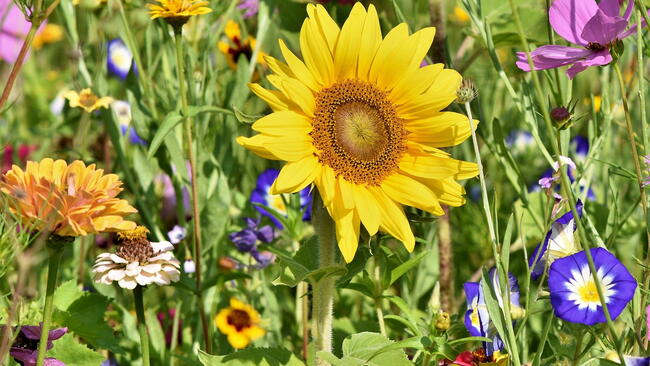A number of readers asked me about which plants are the easiest to grow, what are the ones that survive anything and how can they have instant beauty.
We’re talking flowers, not vegetables.
It’s seems like most beginning gardeners are interested in color, fragrance and beautifying their outdoor living area.
My first bit of advice is to include scented flowers like alyssum around patios or decks where you relax.
They’re easy to grow, combine well with other flowers and offer a heady vanilla-honey fragrance. Put some in a pot at nose level on your picnic table.

Alyssum is easy to maintain, with an enticing honey-vanilla perfume. 'Snow Princess' is an especially vigorous grower with plenty of fragrance. Plant some where you sit outdoors or near open windows. Photo courtesy of Proven Winners.
Zinnias are also easy to grow and require little care. They come in many forms, from singles like ‘Pinwheel’, doubles such as ‘Magellan’ and mound types like the Profusion series. Single-flowered types and Cherry or ‘Orange Profusion’ mounded zinnias also have built-in mildew resistance.

Mounding zinnias like 'Orange Profussion' spread and create a low blanket around taller flowers.
If you are a weekend-only gardener, pick drought-resistant flowers such as cosmos, yarrow, four-o’-clocks, coreopsis, sunflowers and portulaca for your flower beds. They can get by easily with only a weekly watering.

Cosmos are do-nothing flowers. Do nothing and they bloom like crazy!
Planting in a low, wet spot? Choose moisture-lovers like daylilies, cannas, astilbe and phlox. For hot spots, where the sun beats down unmercifully, select plants with red pigment in their leaves. Red-leafed fibrous begonias, for instance, take the heat much better than their green-leafed cousins.

Red-leafed begonias will take the blazing sun and also do well in shady areas. Photo courtesy of the National Garden Bureau.
For shady areas, impatiens are perfect. Look for plants with few flowers. Plants that have flowered heavily may stall and quit blooming when transplanted into your garden. Look for small, compact plants, too, for the best vigor. If you want impatiens to grow tall, space them close together—about 4 to 6 inches apart. For low plants, space impatiens wider—about 12 to 14 inches apart.
Care-free Tips
Incorporate time-release fertilizer when you plant. Whether you pick organic or synthetic, be sure it feeds plants 90 days.
Mulch heavily to lessen moisture loss, so you don’t have to water as often.
Pinch off dead flowers to trigger more flower formation. The exceptions are alyssum, impatiens and fibrous begonias. They drop their old flower naturally.
What flowers do you find the easiest in your garden? And, what do you recommend to the beginning gardener?














